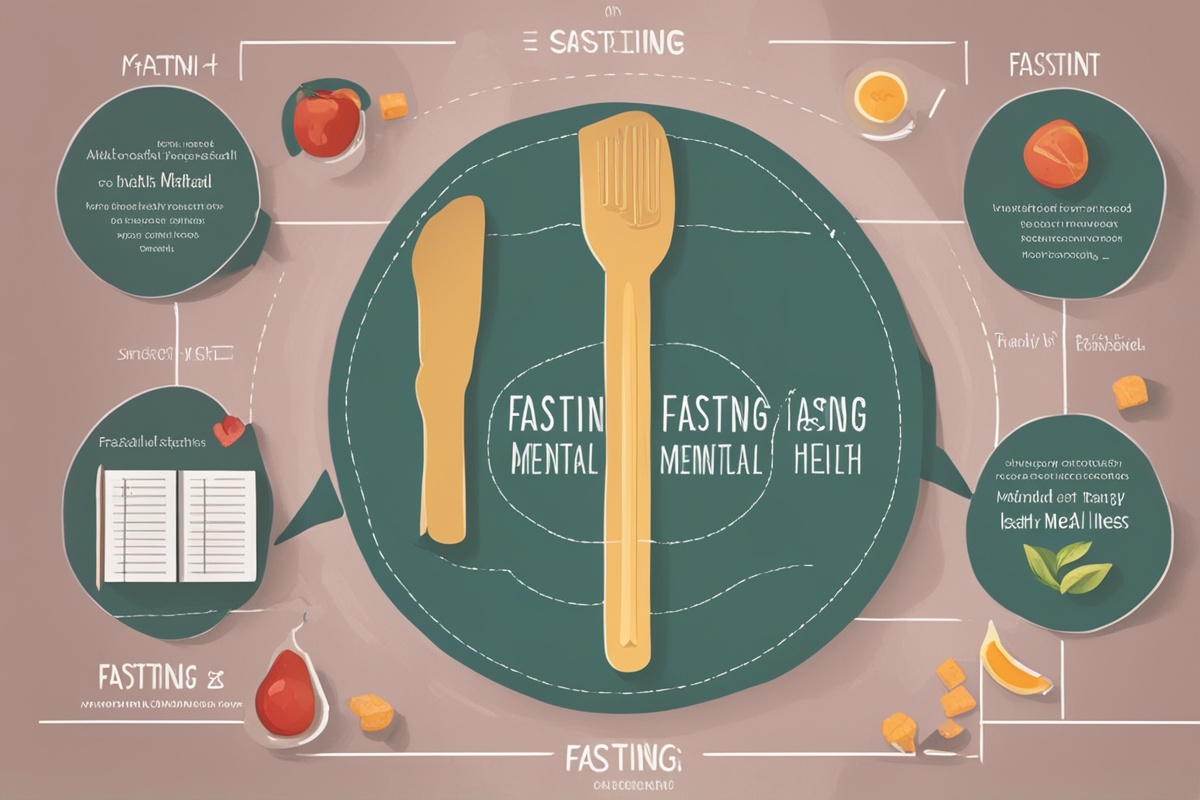Fasting has long been associated with physical health benefits, but its impact on mental well-being is gaining increasing attention. Among the many approaches to fasting, incorporating mindful eating breaks stands out as a powerful tool to enhance mental clarity and emotional balance. By focusing on the concept of “Mindful Eating Breaks Boost Clarity,” this post explores how intentional pauses during fasting can sharpen focus, reduce stress, and improve overall mental health. Let’s dive into how mindful eating breaks can transform your fasting journey into a holistic practice for mind and body.
The Connection Between Fasting and Mental Clarity
Fasting, whether intermittent or prolonged, triggers a cascade of physiological changes in the body that can positively influence brain function. During fasting, the body shifts into a state of ketosis, where it burns fat for energy, producing ketones that are known to support cognitive performance. However, fasting alone isn’t enough to maximize mental clarity. Mindful eating breaks—short, intentional periods of consuming nutrient-dense foods with full awareness—play a crucial role in sustaining focus and preventing mental fatigue. By paying attention to what and how you eat during these breaks, you create a synergy between fasting and nourishment that boosts clarity.
Studies have shown that fasting can enhance brain-derived neurotrophic factor (BDNF), a protein linked to improved memory and learning. Pairing this with mindful eating ensures that when you do eat, you’re fueling your brain with the right nutrients to maintain this heightened state of mental sharpness. For more on the science of fasting and brain health, check out our post on Fasting for Cognitive Enhancement.
What Are Mindful Eating Breaks?
Mindful eating breaks are deliberate pauses in your fasting routine where you consume food with intention and awareness. Unlike mindless snacking or rushed meals, mindful eating involves savoring each bite, paying attention to hunger cues, and choosing foods that support your mental and physical goals. During a fasting schedule, such as the 16:8 method (16 hours of fasting and an 8-hour eating window), these breaks become opportunities to reset your mind and body. The principle behind “Mindful Eating Breaks Boost Clarity” is that these intentional moments prevent the mental fog that can sometimes accompany fasting, especially for beginners.
To practice mindful eating, sit down without distractions, chew slowly, and focus on the flavors and textures of your food. This practice not only enhances digestion but also calms the mind, reducing stress hormones like cortisol that can cloud mental clarity. Learn more about integrating mindfulness into your routine with our guide on Mindfulness Practices During Fasting.
How Mindful Eating Breaks Enhance Focus
One of the most immediate benefits of mindful eating breaks during fasting is improved focus. When you fast, your body conserves energy by reducing unnecessary processes, which can sometimes lead to feelings of sluggishness or distraction if not managed properly. Mindful eating breaks counteract this by providing a mental reset. By stepping away from work or stressors to eat with intention, you allow your brain to recharge, much like a short meditation session.
Moreover, the foods you choose during these breaks can directly impact your cognitive function. Opting for brain-boosting foods like nuts, berries, and fatty fish—rich in omega-3 fatty acids—can amplify the clarity-boosting effects of fasting. The act of eating mindfully also helps regulate blood sugar levels, preventing the spikes and crashes that disrupt concentration. For a deeper dive into brain-friendly foods, see our article on Nutrition for Mental Sharpness.
Reducing Stress Through Mindful Eating During Fasting
Stress is a major barrier to mental clarity, and fasting can sometimes exacerbate it if hunger triggers irritability or anxiety. This is where mindful eating breaks shine as a stress-relief tool. Taking time to eat slowly and focus on the present moment activates the parasympathetic nervous system, which promotes relaxation. This practice turns a simple meal into a grounding ritual, helping to lower stress levels and improve emotional resilience.
Incorporating mindfulness into your eating breaks also fosters a healthier relationship with food, reducing the guilt or overeating tendencies that can arise during fasting windows. By emphasizing quality over quantity, you train your mind to view food as nourishment rather than a source of stress. Explore additional stress-relief techniques in our post on Fasting and Emotional Well-Being.
Tips for Incorporating Mindful Eating Breaks Into Your Fasting Routine
Ready to harness the power of mindful eating breaks to boost clarity? Here are some practical tips to get started:
- Set a Schedule: Plan your eating breaks during your fasting window to avoid impulsive eating. For example, if you follow a 16:8 fast, schedule two mindful meals or snacks within your 8-hour window.
- Choose Nutrient-Dense Foods: Opt for whole, unprocessed foods like vegetables, lean proteins, and healthy fats to support brain health and sustain energy levels.
- Eliminate Distractions: Turn off your phone, step away from your desk, and focus solely on your meal. This helps you stay present and enhances the mental reset.
- Practice Gratitude: Before eating, take a moment to appreciate your food. This simple act can shift your mindset and reduce stress.
- Listen to Your Body: Pay attention to hunger and fullness cues. Stop eating when you’re satisfied, not overly full, to maintain mental lightness.
By following these steps, you’ll find that mindful eating breaks become a natural and rewarding part of your fasting practice. For more fasting tips, check out our comprehensive guide on Beginner’s Guide to Intermittent Fasting.
Potential Challenges and How to Overcome Them
While mindful eating breaks offer numerous benefits, they can be challenging to implement, especially if you’re new to fasting or mindfulness. Common obstacles include time constraints, cravings, and difficulty staying present during meals. To overcome these, start small by dedicating just 5–10 minutes to a mindful break and gradually increase the duration as it becomes a habit. If cravings strike, keep healthy snacks on hand to avoid derailing your fasting goals.
Another challenge is mental resistance—your mind may wander during meals, especially if you’re used to multitasking. Combat this by using a simple anchor, like focusing on your breath or the sensation of chewing, to bring your attention back to the present. With patience and consistency, mindful eating breaks will become second nature, paving the way for sustained mental clarity.
Disclaimer: The information provided in this post is for educational purposes only and is not intended as medical advice. Fasting and mindful eating may not be suitable for everyone, especially individuals with certain health conditions or dietary restrictions. Always consult with a healthcare professional or nutritionist before starting any fasting regimen or making significant changes to your diet to ensure it is safe and appropriate for your individual needs.
References
- Harvard Health Publishing – Intermittent Fasting: Surprising Update
- National Center for Biotechnology Information – Effects of Intermittent Fasting on Health, Aging, and Disease
- Mayo Clinic – Mindful Eating: What It Is and How to Practice It
- Psychology Today – Mindful Eating
- WebMD – Intermittent Fasting and Brain Health
This content is for informational purposes only and not a substitute for professional advice.






